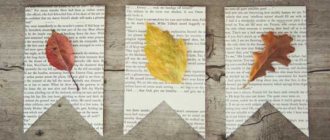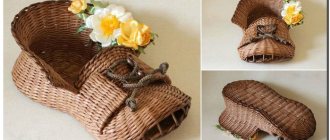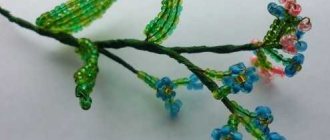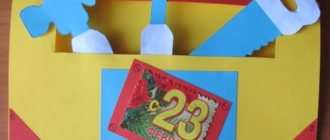Home / Ceiling design / Design solutions / How to make paper stone floors with your own hands?
Marble and simple stone floors look very beautiful and are just as expensive. Not everyone can afford such finishing. Natural marble is not only expensive, but also difficult to work with, which leads to the need to hire specialists and pay for their work, and this will increase the budget to unimaginable proportions. At the same time, there is a way to create a marble-like floor with your own hands and very inexpensively - from paper. Some may think that this is impossible, however, in this article we will try to prove the opposite.
What to cook
Since you have to create stone floors with your own hands from paper, you should purchase it first. The ideal option would be kraft paper - a common packaging material sold in rolls. It is very durable, perfect for the chosen type of finish and is very inexpensive - such a coating will not break your budget.
The marble texture will be created simply: you need to crumple the paper parts, and then cover them with a stain of a suitable color, which you will also have to purchase. In addition to the structure of the floor, a protective layer of varnish must also be created. It can be different - parquet, polyurethane, epoxy and so on. The most durable option is epoxy resin, but it is quite expensive and a polyurethane coating would be a compromise.
In addition to all of the above, you will need several containers for glue, stain and varnish, as well as the tools with which they will be applied. Glue is purchased based on the entire surface, and varnish must be purchased with a reserve - you will need to make three, or better yet, four layers to make the surface strong enough. Since our paper floor is essentially an imitation of stone, you need to buy stain in a shade that matches the natural material.
Required tools and materials
Only paper wallpaper without decorative elements on the surface is suitable for covering the floor. Non-woven or vinyl materials are not recommended, as they are airtight and may peel off during use.
Wallpaper patterns are selected based on your own taste and the overall decoration of the room. This can be a traditional imitation of wood or natural stone, as well as any ornaments, including 3D options.
To work you will also need:
Stages of work
In order to avoid mistakes, you will have to plan everything in advance. Each stage of work takes a certain time and some of them will be quite long:
- Preparing the base. This is the most expensive step if required. The plane should be flat and smooth, without significant flaws. You will have to level the base if necessary, which may not be cheap.
- Having prepared the base, you can move on to more creative work - the material must be torn into different-sized fragments, which in their shape will imitate laid stones. Each piece must be crumpled and straightened, creating the desired coating texture.
- Next, you have to create the stone floor itself from paper with your own hands - the material torn into pieces is glued to the surface. Glue is applied to both the base and the glued fragments themselves.
Important: the pieces of coating are applied with a slight overlap, as they will then decrease in size. It is necessary to ensure that the glue does not protrude on the outside of the fragments being laid - the varnish adheres very poorly to the protruding glue.
- The next stage is coating with stain. In each case, everything will be individual, since the process is creative and depends on how bright and textured you want to create the coating. In some cases, you can do without stain at all by covering the surface with polyurethane paint of the desired shade.
- The creation of a protective layer completes all operations. The varnish must be applied in several layers, each thoroughly drying. In terms of time costs, this is the longest stage. However, you can’t rush here - you can easily ruin everything by covering the floor with a new layer of varnish too early.
PVA glue diluted with water is excellent as an adhesive composition. It must be diluted with water in a ratio of 1:1 for concrete bases and 1:2 for wooden ones. It is very important to thoroughly saturate each of the glued fragments with the adhesive composition. If this is not done, the material may subsequently wrinkle and become covered with wrinkles, which are very difficult to eliminate, and sometimes even impossible. When creating a stone floor from paper, you need to pay attention to even such small details - the overall impression of the finish depends on this.
Choosing the right varnish is an important point. Many people make the mistake of buying a glossy composition. It looks great and shines, but only in cases where the surface is initially perfectly smooth. In our case, this will not happen - there are always small flaws on the surface of the ceiling. Therefore, the best choice would be a matte, semi-matte or, as a last resort, semi-gloss varnish. Despite the fact that our paper stone floor itself is very cheap, the protective layer is better made from high-quality varnish, which can be expensive.
Solid color.
An easy way to breathe new life into a worn-out wood floor is by painting it completely. Choosing paint will be the most difficult step. Take a look at the options below and think about which color suits you best and will harmonize with your interior. Be sure to thoroughly clean and prime your wood floor before painting.
Patterns on a wooden floor.
Bold decisions in the interior have always caused delight. Don't be afraid to experiment when updating an old floor. In this painting option, everything depends only on your imagination. Take a look at the photos below, maybe they will inspire you.
Useful short videos from Make-Self.net
How to make a stone-like floor from wrapping paper with your own hands?
It turns out that you can use wrapping paper to make a floor like this, as if it were made of stone.
Of course, you can make a floor out of paper, but in my opinion, the labor invested is unlikely to be justified, and the coating is not durable.
We buy wrapping paper.
We prepare the base, the best option is a concrete floor, but not rubbed to zero, but slightly rough.
Next, we tear the paper (chaotically) into large pieces, our task is to make it as close as possible to the “resemblance” to stones.
We buy PVA construction adhesive
We coat the floors with this mixture and glue the paper, with an overlap between each other (not much).
Coat the top of the paper laid “under the stone” with the same composition (PVA, water 1:1).
Next we work with varnish, maybe on wood, preferably colorless varnish.
At least two layers to dry.
At the finish, we paint the finished floors with polyurethane varnish (this composition will give the flooring strength).
If desired, each individual “stone” can be painted in different colors, which will ultimately bring the visual perception of the floor closer to that of a floor lined with natural stone.
This method of making a floor with your own hands from paper is for creative people who want to make an original floor with their own hands.
There is no need to spend a lot of money on this floor. No epoxies, etc.
You need any thick paper, you can use craft paper or paper bags, you need PVA glue, polyurethane paint or parquet varnish, you can use stain to give the desired color to your future floor. The main thing is that the floor is flat and smooth and the desire to create with your own hands. If the floor is not level, then it is not difficult to level it, if desired, using the cheapest methods.
Next, it is advisable to remove the old baseboard, clean the floor, wash it, and dry it. Tear and cut the paper into pieces of any shape that you like and glue these pieces with PVA glue to the floor, dry, then you can stain or paint whatever you like. And then cover it with either polyurethane paint or varnish in several layers.
Step 1. Surface preparation. The final result depends on how well the floor surface is prepared. First, remove the baseboards and level the old coating. In some cases, the floor has to be leveled with fiberboard sheets.
Step 2. The wrapping paper is torn into separate pieces. To achieve maximum resemblance to natural stone, the edges of the paper are left uneven.
Step 3. The floor is covered in sections with PVA glue and pieces of paper are placed on it with a slight overlap over each other, since the paper shrinks when it dries. After the glue has dried, the floor surface is covered with a primer made from PVA glue diluted with water in a one-to-one ratio.
Step 4. Wait for the surface to dry thoroughly and apply a layer of transparent wood varnish with a paint roller.
Step 5. To protect the floor from impacts and scratches, apply several layers of polyurethane varnish with intermediate drying of each layer.
The floor will look much more expressive if the pieces of paper are painted in different colors before gluing. If marble flooring isn't your style, you can create a fall-themed floor by cutting wrapping paper into leaf shapes.
How to make paper stone floors with your own hands?
Marble and simple stone floors look very beautiful and are just as expensive. Not everyone can afford such finishing. Natural marble is not only expensive, but also difficult to work with, which leads to the need to hire specialists and pay for their work, and this will increase the budget to unimaginable proportions. At the same time, there is a way to create a marble-like floor with your own hands and very inexpensively - from paper. Some may think that this is impossible, however, in this article we will try to prove the opposite.











